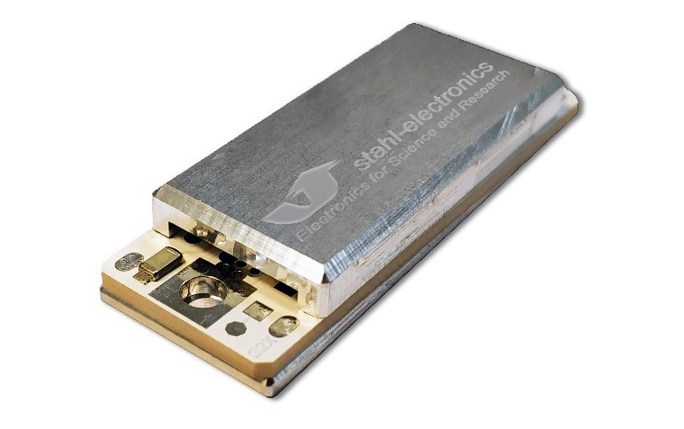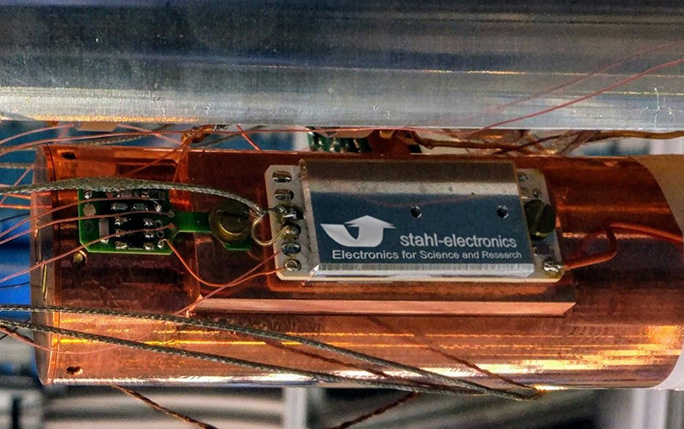Single-pass non-destructive electronic detection of charged particles

AVA Fellow Ilia Blinov is based at Stahl-Electronics in Germany. As part of a wider collaboration he works with the Atomic Physics group at nearby GSI/FAIR. His project focuses on the provision of a novel detection system, which will be easier to operate, rugged under adverse conditions as found at ELENA and FLAIR and feature much higher detection sensitivity, down to single particles.
Within the framework of AVA, this collaboration has setup a charge sensitive amplifier for the HILITE experiment currently operated at GSI/FAIR. The results from this work have now been published in a paper co-authored by Ilia. The authors present an experimental method and apparatus for the simultaneous non-destructive determination of the absolute ion number of charged particles. The detector system uses a highly sensitive and ultralow CX4 amplifier from Stahl-Electronics which has been especially developed for the purpose of deep-cryogenic operation and very low input voltage and current noise density. The goal of this part of the setup was designed to detect ion bunches in a non-destructive way, before they enter a Penning Trap. The amount of charge can be calculated by the standard method of electrostatic calculations.
In order to non-destructively detect passing particles, an induced charge is picked up by an electrode. This detection electrode is connected to Stahl-Electronics’ low-noise amplifier and read out by an oscilloscope. By calibrating the sensitivity of the device, absolute ion numbers can be determined. The analysis procedure does not require high computational effort to infer the desired ion bunch parameters from the acquired signal.

The CX4 amplifier by Stahl-Electronics connected to the detection electrode.
The accuracy of the measurement of ion number and ion energy is limited by the experimental conditions of the setup. In the present configuration, the minimum detectable number of Ar13+ ions in a bunch is about 480 at a temperature of 100 Kelvin. At a temperature of 4 Kelvin, around 95 ions can be detected. Currently, two of these CX4 amplifiers are mounted to both ends of the HILITE trap and form an integral part of the ion detection system.
This new sensor has been fully characterized, has demonstrated superior performance and was found to be a versatile product for a wide range of applications.
Further information:
- M. Kiffer, …, I. Blinov, et al., “Single-pass non-destructive electronic detection of charged particles”, Review of Scientific Instruments 90, 113301 (2019), https://doi.org/10.1063/1.5110988